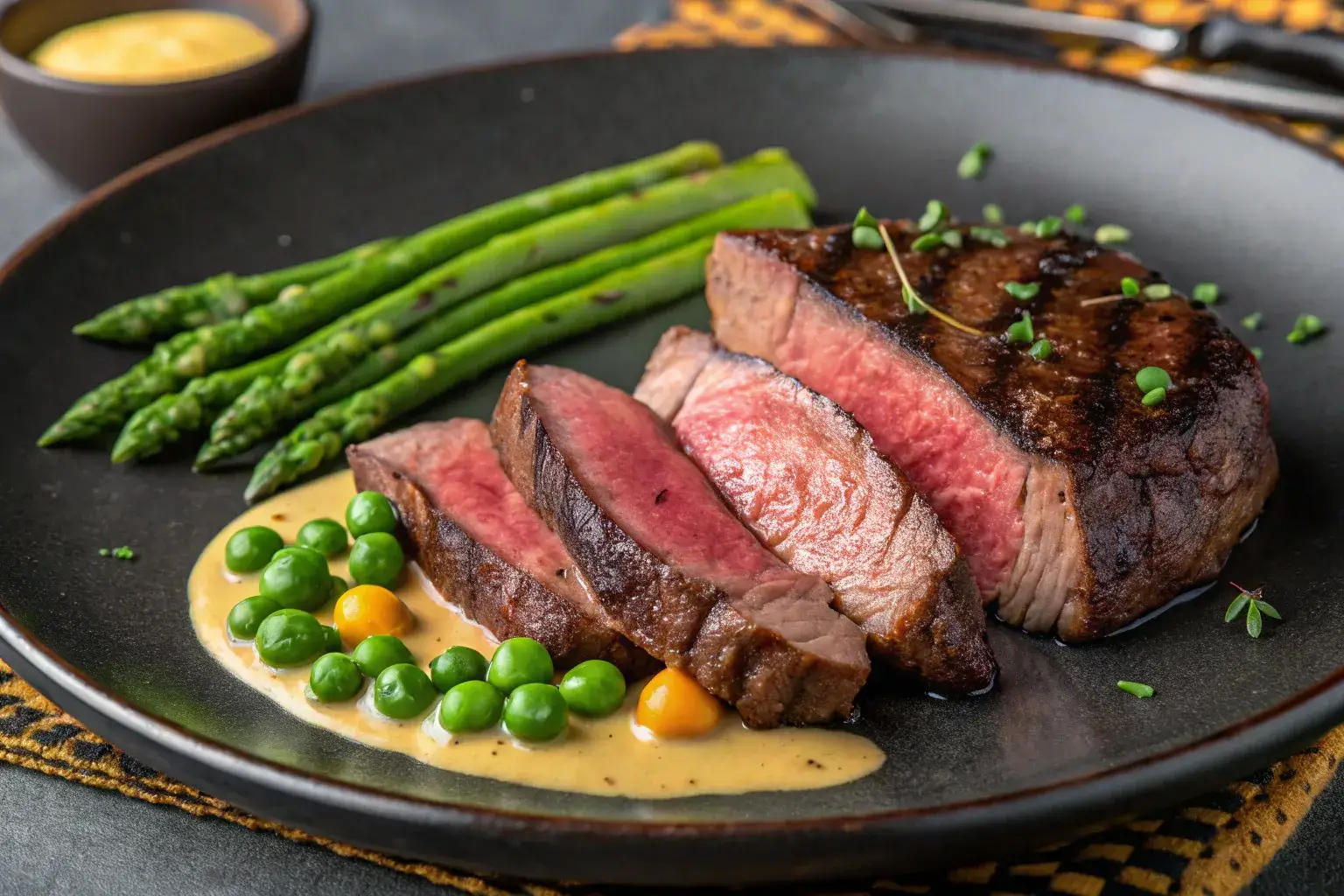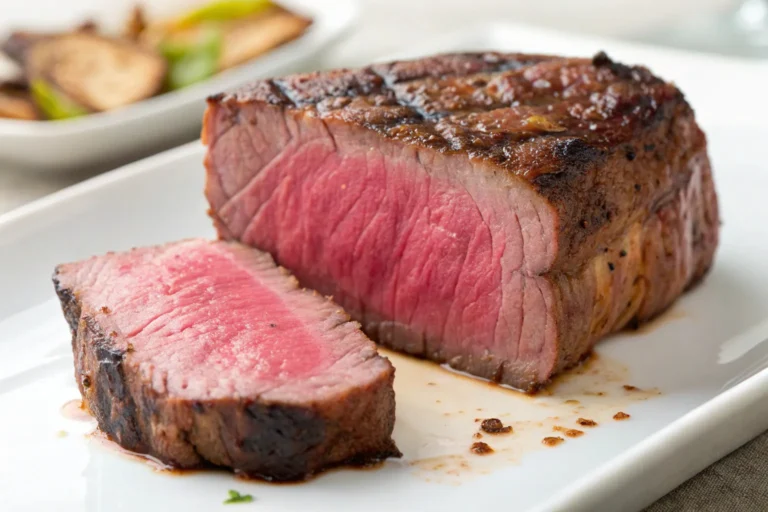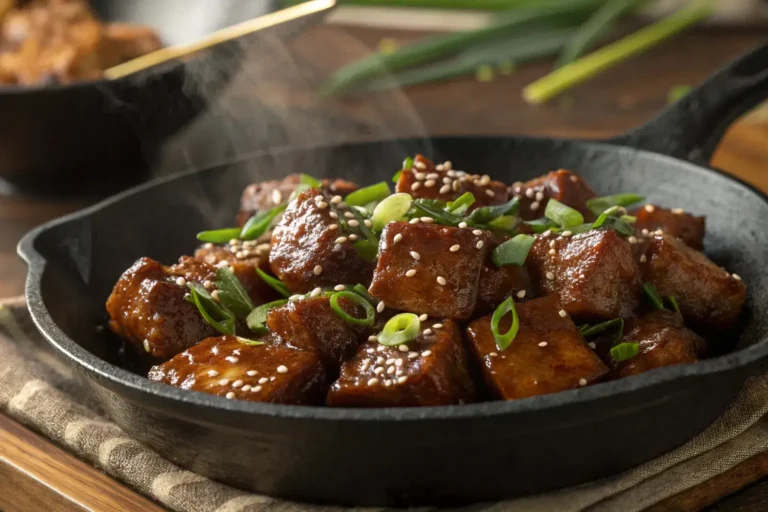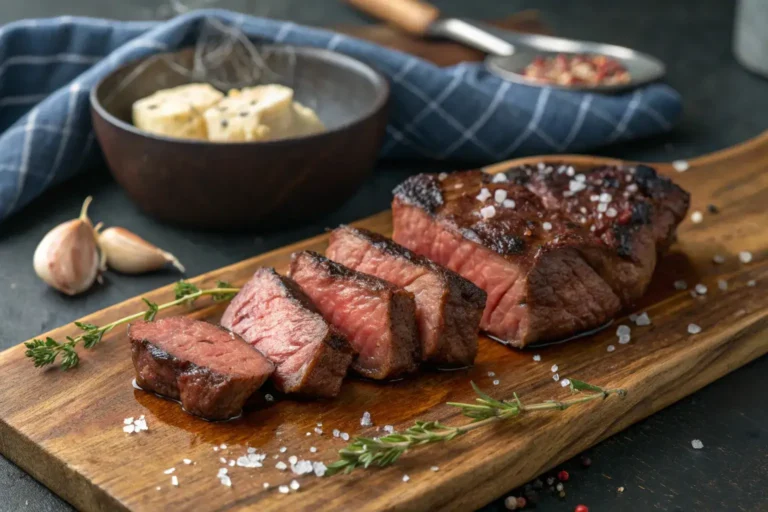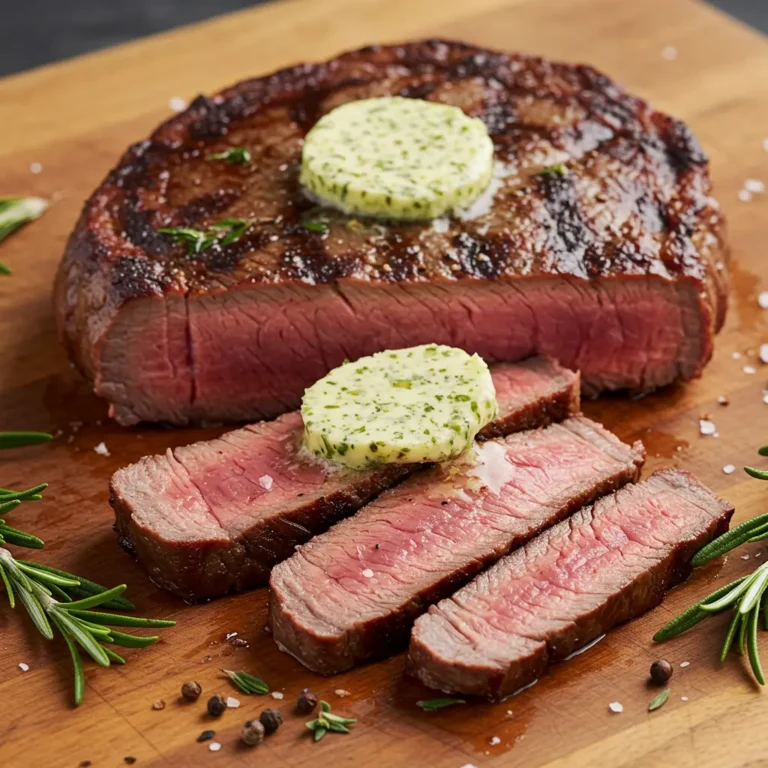How to Cook Steak, Peas & Asparagus Like a Pro Chef
Craving a restaurant-quality dinner without the steakhouse prices? steak and peas and asparagus recipe is your ticket to the perfect home-cooked meal! After testing countless methods (and a few memorable kitchen fails), I’ve cracked the code for juicy steak and perfectly crisp spring vegetables (steak and peas and asparagus) that’ll make your family think you’ve been secretly taking chef lessons.
Table of Contents
The Perfect Steak and Spring Vegetables Combination
Why This Classic Pairing Works
The magic of steak and peas and asparagus lies in their natural harmony. While the rich, savory flavors of the steak satisfy your protein cravings, the bright, tender spring vegetables bring a refreshing balance to your plate. Moreover, this combination isn’t just delicious – it’s also incredibly practical for home cooks since everything can be ready in under 30 minutes!
What makes this pairing truly special is how the vegetables’ subtle sweetness complements the perfectly seared steak. Furthermore, the textures play beautifully together: your fork glides through the tender meat while the crisp asparagus and sweet peas add a delightful snap to each bite.
Essential Ingredients and Equipment
The secret to an outstanding steak and peas and asparagus dinner lies in selecting quality ingredients. Let’s break down exactly what you’ll need.
For the steak:
- A high-quality ribeye or strip steak (room temperature)
- Kosher salt and freshly ground pepper
- Cast iron skillet (your steak’s best friend!)
- Butter, garlic, and fresh herbs for basting
For the vegetables:
- Fresh spring asparagus (look for medium-thick stalks)
- Sweet garden peas (fresh or frozen work great)
- Olive oil
- Sea salt
- Lemon wedges for serving
Pro Chef Tips for Success
Want to know what separates a good steak and peas and asparagus dinner from a great one? It’s all in these professional techniques.
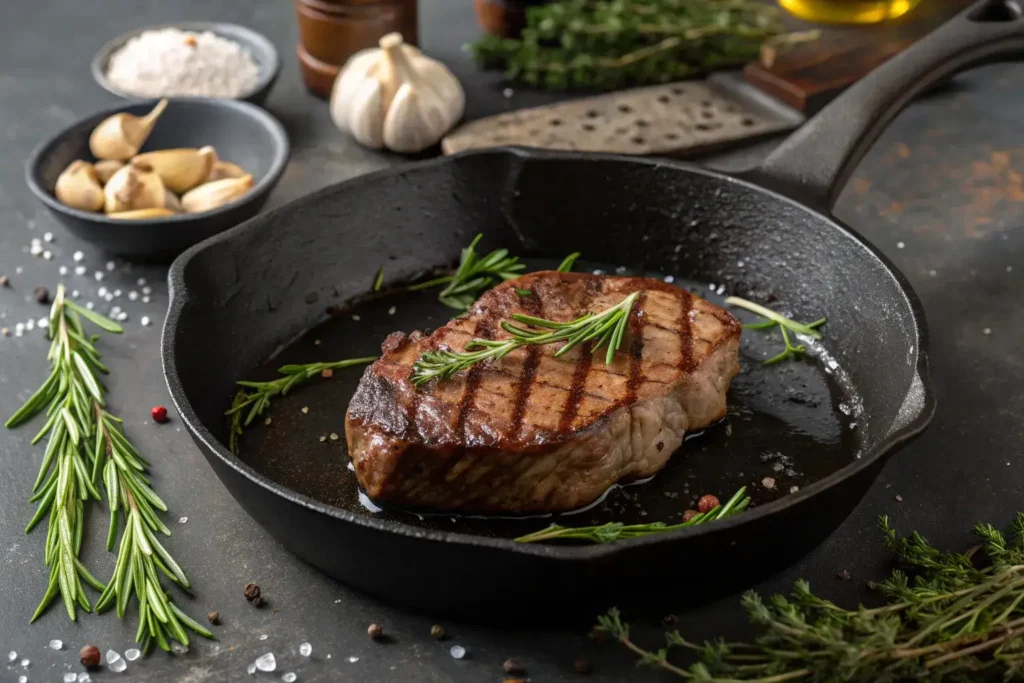
The secret to restaurant-quality steak and vegetables starts with proper temperature control. First of all, always let your steak come to room temperature before cooking. Additionally, make sure your pan is smoking hot before the steak hits the surface – this ensures that perfect golden crust we’re all after!
For the vegetables, timing is everything. First, blanch your asparagus in well-salted water until bright green, then immediately plunge into an ice bath. Subsequently, you can quickly reheat them in a hot pan just before serving. The peas need just 2-3 minutes of cooking to maintain their sweet pop.
Time-Saving Prep Strategies
Want to make this classic steakhouse dinner even easier? Here’s my game plan for success:
- Prep your vegetables first: trim asparagus and shell peas (if using fresh)
- Set up your ice bath for the vegetables
- Get your steak to room temperature while you prep
- Have your butter, garlic, and herbs ready for basting
- Keep lemon wedges and finishing salt nearby for the final touch
Mastering Restaurant-Quality Steak
Choosing the Right Cut for Your Meal
Let’s talk about picking the perfect steak for your steak and spring vegetable dinner! A well-marbled ribeye or strip steak works beautifully with crisp asparagus and peas. When shopping, look for steaks that are about 1-1.5 inches thick with nice marbling throughout.
Pro tip: While premium cuts like filet mignon are great, you can create an equally impressive meal with more budget-friendly options like top sirloin. The key is knowing how to cook each cut to its full potential!
The Science of Perfect Steak Temperature
Getting that perfect doneness for your steak isn’t just luck – it’s science! Here’s your foolproof temperature guide:
- Rare: 125°F (bright red center)
- Medium-rare: 135°F (warm red center)
- Medium: 145°F (pink center)
- Medium-well: 150°F (slightly pink center)
- Well-done: 160°F (no pink)
Remember, your steak will continue cooking during the resting period, so pull it off the heat about 5 degrees before your target temperature.
Pan-Searing Secrets from Professional Kitchens
Want to know how restaurants get that perfect crust on their steaks? First, pat your meat completely dry with paper towels. Then, season generously with salt and pepper. Moreover, make sure your pan is screaming hot before the steak goes in.
Here’s my tried-and-true method:
- Heat your cast iron skillet until it’s smoking hot
- Add your steak to the dry pan
- Don’t touch it for 3-4 minutes
- Flip once and add butter, garlic, and herbs
- Baste continuously until desired temperature
Resting and Slicing Tips for Maximum Juiciness
The secret to a juicy steak isn’t just in the cooking – it’s in the resting! After cooking, let your steak rest for 5-10 minutes. During this time, you can quickly cook your peas and asparagus to perfection.
When it’s time to slice, remember to cut against the grain. This breaks up the muscle fibers, ensuring each bite is as tender as possible. Additionally, use a sharp knife to get clean cuts without losing any precious juices.
Pro tip: While your steak rests, tent it loosely with foil. This keeps it warm while allowing excess steam to escape, preserving that perfect crust you worked so hard to achieve!
Spring Vegetable Magic: Peas and Asparagus
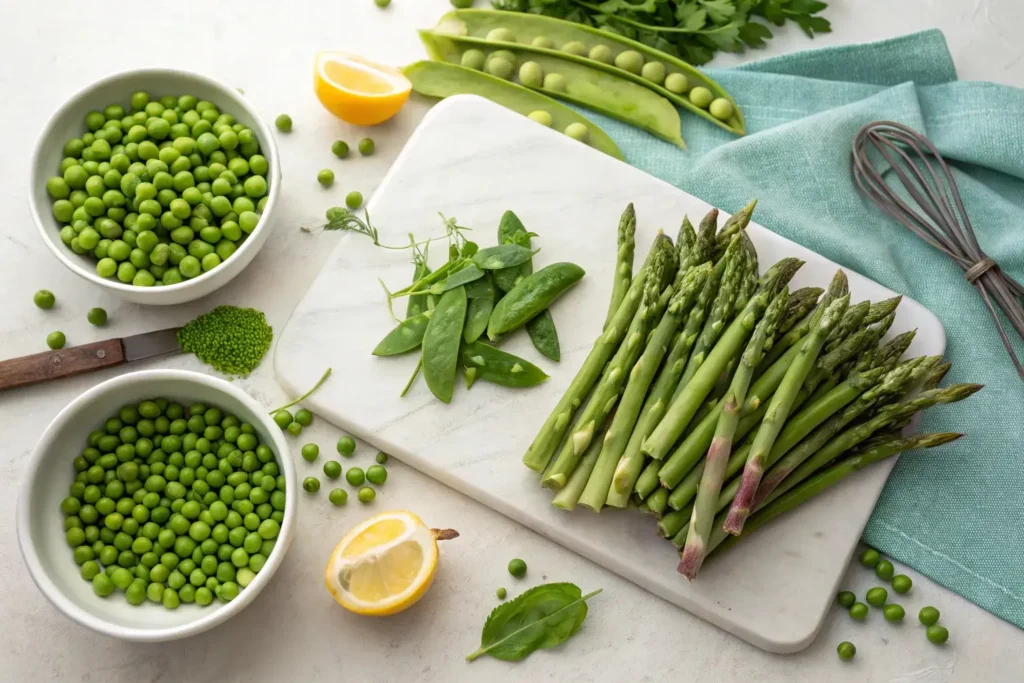
Selecting and Storing Fresh Spring Vegetables
Getting ready to pair your perfect steak with spring vegetables? Let’s make sure you’re starting with the best ingredients! When choosing asparagus, look for bright green stalks with tight, compact tips. The thickness doesn’t affect quality – it’s just a matter of preference!
For peas, you’ve got options! While fresh spring peas are amazing (look for bright green, plump pods), don’t feel bad about using frozen ones. In fact, frozen peas are often sweeter since they’re picked and frozen at peak ripeness!
Storage tip: Keep your asparagus fresh by trimming the ends and standing the stalks upright in a glass with an inch of water, just like flowers! Cover loosely with a plastic bag and refrigerate.
Blanching Techniques for Vibrant Color
The secret to restaurant-quality vegetables alongside your steak? Blanching! Here’s your foolproof method:
- Bring a large pot of water to a rolling boil
- Add enough salt to make it taste like sea water
- Prep an ice bath while your water heats
- Drop your asparagus in for 2-3 minutes
- Transfer immediately to the ice bath
- For peas, they need just 1-2 minutes!
This method keeps your veggies bright green and perfectly crisp-tender – the perfect complement to your juicy steak!
Quick vs. Traditional Cooking Methods
While blanching is my go-to method for steak and spring vegetables, you’ve got options! For a quicker approach, try steam-sautéing:
- Heat a tablespoon of butter in a large pan
- Add your trimmed asparagus
- Pour in 2-3 tablespoons of water
- Cover and steam for 3-4 minutes
- Remove lid and let water evaporate
- Add peas in the last minute
The result? Tender-crisp vegetables that are ready in no time!
Seasoning Combinations That Elevate
Want to make your peas and asparagus shine alongside that beautiful steak? Here are my favorite seasoning combinations:
- Classic: Lemon zest, sea salt, and fresh pepper
- Garlic lover’s: Sautéed garlic, butter, and fresh herbs
- Zesty: Red pepper flakes, lemon juice, and olive oil
- Umami boost: Parmesan shavings and balsamic glaze
Remember, sometimes simple is best – let the natural sweetness of your spring vegetables complement that perfectly cooked steak!
For more seasonal inspiration, check out our Beef Chuck Eye Steak
Bringing It All Together: Timing and Plating
Professional Timing Strategies
The secret to a perfect steak and spring vegetable dinner? Timing is everything! Let me walk you through my foolproof sequence that ensures everything lands on your plate at its peak.
First, blanch your asparagus and peas – they can hang out in the ice bath while you tackle the steak. Then, pat your steak dry and let it come to room temperature. Meanwhile, get your pan screaming hot! This prep work is what separates a good meal from a great one.
Temperature Management Across Components
Let’s talk about juggling temperatures like a pro! While your perfectly cooked steak is resting (this is non-negotiable), that’s your golden window to finish the vegetables. Here’s my tried-and-true method:
- Remove steak at desired temperature
- Tent loosely with foil (about 5-7 minutes)
- Quick-sauté your blanched asparagus and peas
- Plate everything while the steak is still warm
The key to a perfect steak and peas and asparagus meal is timing each component just right.
Pro tip: Keep your serving plates in a warm oven (around 170°F) until you’re ready to plate. It makes such a difference!
Plating Like a Restaurant Chef
Want your steak and spring vegetables to look as good as they taste? Here’s how to plate like a pro:
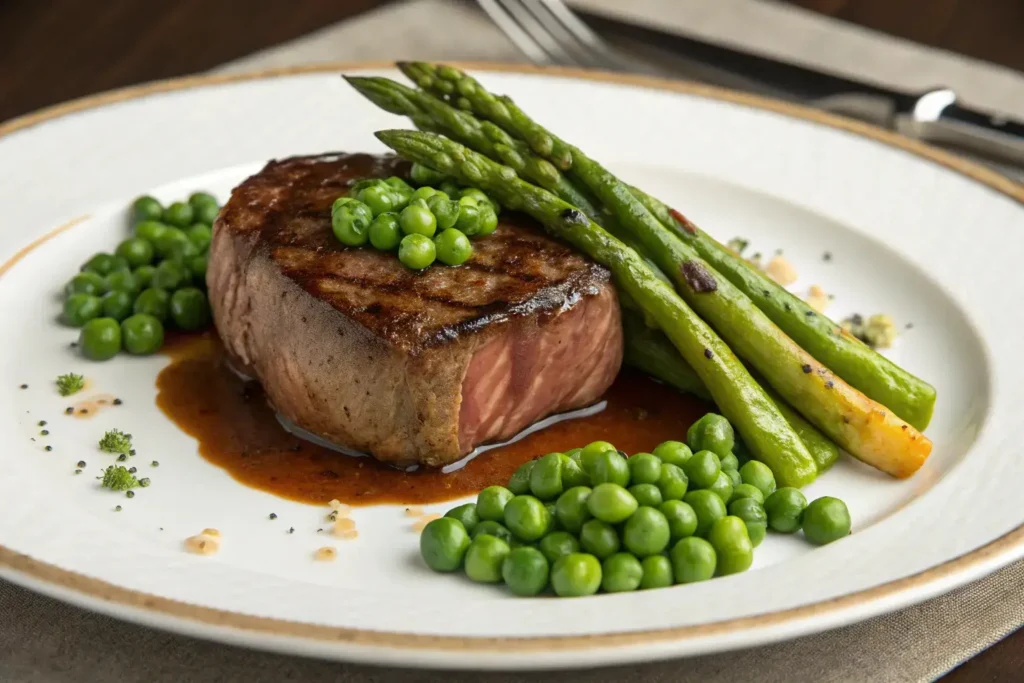
- Position your sliced steak slightly off-center
- Arrange asparagus spears in a neat row alongside
- Scatter bright green peas around the plate
- Drizzle with any pan juices
- Finish with fresh herbs and a sprinkle of sea salt
Remember, we eat with our eyes first! A little attention to presentation goes a long way.
Wine and Sauce Pairing Suggestions
Complete your steakhouse-worthy meal with the perfect accompaniments. For wine lovers, a bold red like Cabernet Sauvignon beautifully complements the richness of the steak while playing nicely with the spring vegetables.
Sauce options to consider:
- Classic herb butter
- Red wine reduction
- Light lemon-herb vinaigrette (perfect for the vegetables!)
- Rich béarnaise sauce
Remember, these sauces should enhance, not overpower, your perfectly cooked ingredients!
Frequently Asked Questions
Should I cook steak or asparagus first?
Think of your steak as the star of the show – it needs time to rest after cooking! Start by blanching your asparagus and peas, then cook your steak. While the steak rests (about 5-7 minutes), quickly reheat your vegetables. This timing ensures everything reaches your plate at its perfect temperature. Plus, those precious resting minutes give you time to add the final touches to your veggies!
How to prepare asparagus and peas?
For restaurant-quality spring vegetables, start by trimming the woody ends of your asparagus – they’ll snap naturally at just the right spot! For peas, whether fresh or frozen, the key is quick cooking to maintain that sweet pop. Blanch both in well-salted water: 2-3 minutes for asparagus, 1-2 minutes for peas. Remember, they’ll get a final quick sauté just before serving!
Is steak and asparagus a healthy meal?
Absolutely! This classic steak and vegetable combination offers a wonderful balance of nutrients. The steak provides protein, iron, and B vitamins, while asparagus and peas bring fiber, vitamins A and C, and folate to your plate. Plus, when you’re controlling the cooking method and portion sizes at home, you can make it even healthier than restaurant versions.
Why is asparagus paired with steak?
This pairing is a match made in culinary heaven! The slight bitterness and crisp texture of asparagus perfectly complements the rich, savory flavors of steak. Moreover, their peak seasons align in spring, making them natural partners. The bright, fresh taste of asparagus also helps cut through the richness of the steak, creating that perfect balance that keeps you coming back for another bite!
Conclusion
With these tips and techniques, you’re ready to create the perfect steak and peas and asparagus dinner that rivals any steakhouse. Remember, the key to success lies in timing, temperature control, and letting those quality ingredients shine. Don’t forget to let your steak rest, keep those veggies bright and crisp, and most importantly – enjoy the process! Now it’s your turn to head to the kitchen and create something amazing. Happy cooking!
Want to explore more delicious dinner ideas? Check out our collection of quick weeknight meals that’ll make you feel like a pro chef!

